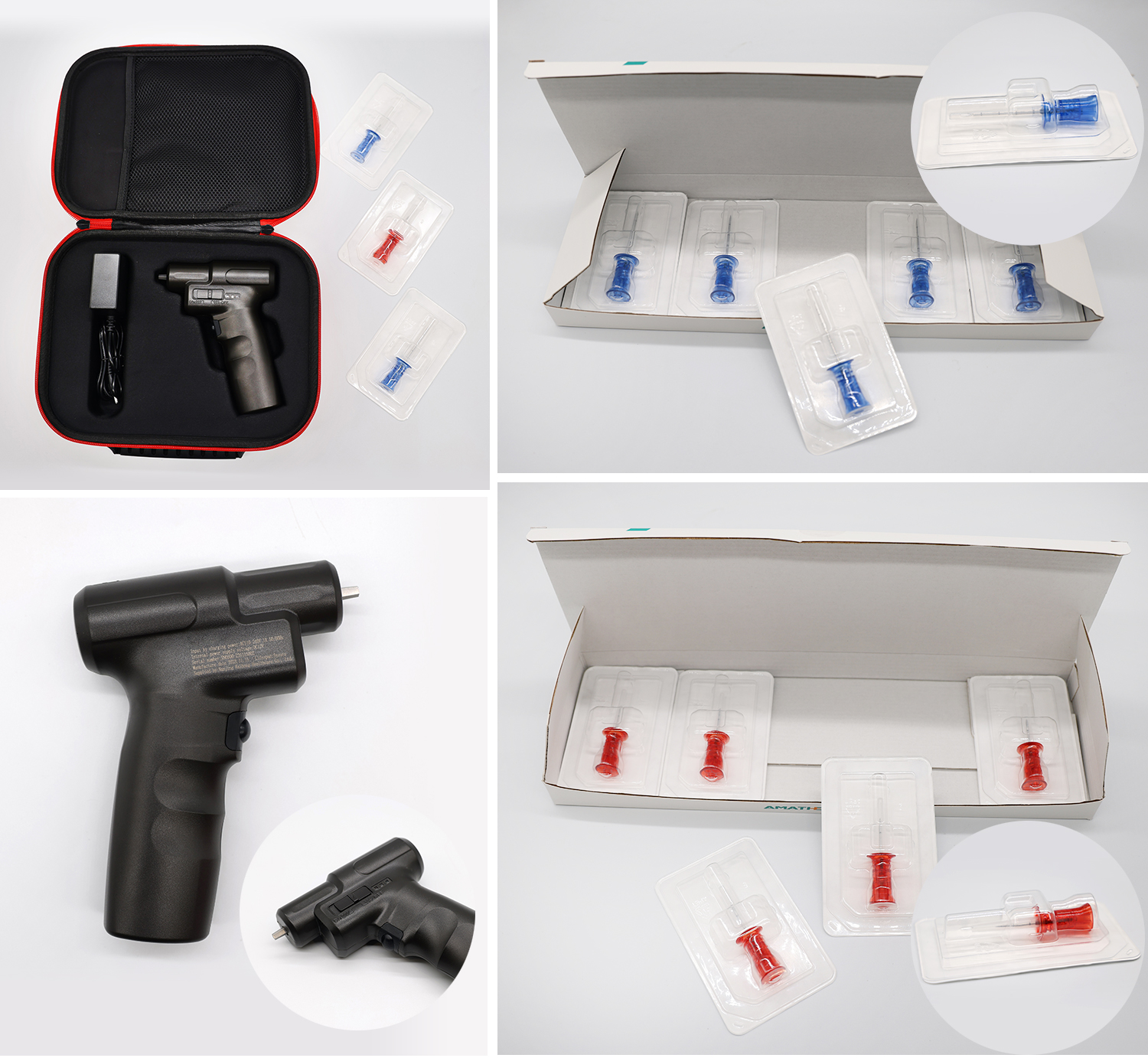- All
- Product Name
- Product Keyword
- Product Model
- Product Summary
- Product Description
- Multi Field Search
- Home
- About Us
- Products
- Customer Services
- MEDICAL INFOR
- Contact Us
| Availability: | |
|---|---|
| Quantity: | |
CNME081004
CNMEDITECH
Medical Electric Orthopedic Intraosseous Infusion System Puncture Needle Electric Bone Drill

Description:
For patients who cannot quickly establish peripheral venous infusion pathway, intraosseous infusion pathway has been proved to be a safe and efficient way of infusion and administration.
The American Heart Association (AHA)、the European Resuscitation Council (ERC) and the International Liaison Committee on Resuscitation(ULCOR) all recommend the use of intraosseous infusion in the guidelines.
Recommendations:
1.Reassess I0 site immediately after establishing intraosseous access.
2.Carrying backup supplies of critical medical devices is an advisable medical protocol.
3.To produce optimal flow rates, the use of a pressure cuff is recommended.
4.Site skin preparation guidelines should follow the same as conventional IV access or per protocol.
5.For conscious patient consider local anesthesia such as lidocaine, per your protocols / policy.

Warnings:
1.Intraosseous access is an alternative to standard or conventional intravenous access and is not recommended to be used for periods exceeding 24 hrs.
2.The use of the electric intraosseous infusion system is restricted to skilled medics, nurses, paramedics and
doctor who were trained on the device.
3.When using an I0 device, the possibility of air embolism may exist.
4.The safe use of the electric intraosseous infusion system in patients with osteoporosis, osteopetrosis,Osgood-Schatter disease, or other tibial bone pathology or deformity has not been proven. These conditions may obscure landmarks of the tibia/ humerus.
5.Metal needle are not MRI compatible.
6.Metal needle may cause scatter artifacts on computed tomography (CT) scans.
7.Do not aim the puncture needle toward the joint space or epiphysial plate.
8.Reusing this disposable puncture needle might lead to infection and harm to the patient.
Contraidnications:
*Skin infection at the site location
*Tumor
*Osteogenesis Imperfecta
*Osteoporosis
*A second attempt following previous 10 insertion / failure on the same bone
*Previous orthopedic procedures near the insertion site
*Fracture of the bone with in the same extremity or selected bone for insertion
Photos:

Customer feedback:

Medical Electric Orthopedic Intraosseous Infusion System Puncture Needle Electric Bone Drill

Description:
For patients who cannot quickly establish peripheral venous infusion pathway, intraosseous infusion pathway has been proved to be a safe and efficient way of infusion and administration.
The American Heart Association (AHA)、the European Resuscitation Council (ERC) and the International Liaison Committee on Resuscitation(ULCOR) all recommend the use of intraosseous infusion in the guidelines.
Recommendations:
1.Reassess I0 site immediately after establishing intraosseous access.
2.Carrying backup supplies of critical medical devices is an advisable medical protocol.
3.To produce optimal flow rates, the use of a pressure cuff is recommended.
4.Site skin preparation guidelines should follow the same as conventional IV access or per protocol.
5.For conscious patient consider local anesthesia such as lidocaine, per your protocols / policy.

Warnings:
1.Intraosseous access is an alternative to standard or conventional intravenous access and is not recommended to be used for periods exceeding 24 hrs.
2.The use of the electric intraosseous infusion system is restricted to skilled medics, nurses, paramedics and
doctor who were trained on the device.
3.When using an I0 device, the possibility of air embolism may exist.
4.The safe use of the electric intraosseous infusion system in patients with osteoporosis, osteopetrosis,Osgood-Schatter disease, or other tibial bone pathology or deformity has not been proven. These conditions may obscure landmarks of the tibia/ humerus.
5.Metal needle are not MRI compatible.
6.Metal needle may cause scatter artifacts on computed tomography (CT) scans.
7.Do not aim the puncture needle toward the joint space or epiphysial plate.
8.Reusing this disposable puncture needle might lead to infection and harm to the patient.
Contraidnications:
*Skin infection at the site location
*Tumor
*Osteogenesis Imperfecta
*Osteoporosis
*A second attempt following previous 10 insertion / failure on the same bone
*Previous orthopedic procedures near the insertion site
*Fracture of the bone with in the same extremity or selected bone for insertion
Photos:

Customer feedback:
